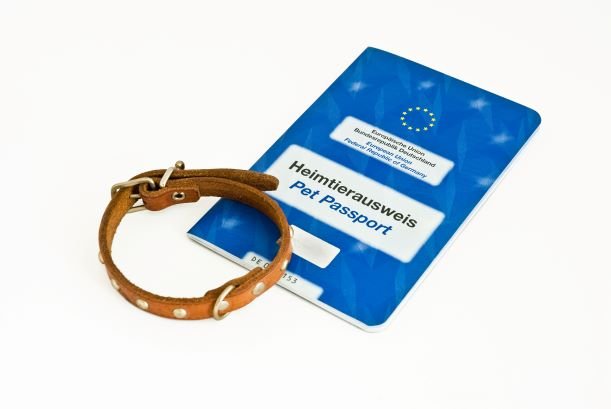
What is the European Pet Passport?
Introduced in 2004, the European Pet Passport is a document required for transporting pets within EU member countries. This passport serves as the pet’s identification papers and fully documents the pet’s vaccinations (especially the rabies vaccination) as well as all important medical check-ups that your dog, cat or even your ferret has had. Unified entry requirements and the EU Pet Passport were designed to simplify the process of travelling abroad with your pet. The 2014 expanded version made it more difficult to falsify documents in order to crack down on the illegal trade of animals.
Why do I need it?
As long as you and your pet are travelling within your home country, you don’t need an EU Pet Passport: A regular vaccination record should more than suffice. If your travels include visiting a different European country, though, the situation looks a bit different. Without the medical certificate of health, you and your four-legged friend could be confronted with challenges at the border. In the worst case scenario, customs may even deny your entry.
Which countries require it?
The European Pet Passport is essential for travelling abroad in the EU. You can also use the passport to bring your dog, cat, or other pet to Switzerland, Norway, Iceland, Lichtenstein, Monaco, Andorra or San Marino. And if you dream of a papal audience with your ferret, you can even use this document to visit Vatican City with your beloved pet.
Where do I get it?
Only authorised vets can issue the European Pet Passport. Ask your vet if they are authorised, and if they aren’t, ask them for the nearest authorised vet.
How much does it cost?
Vets sometimes charge an additional fee for issuing the European Pet Passport, and you may be charged for any vaccinations and/or for having your pet microchipped. Prices can vary both from country to country and from vet to vet. You should call and ask the vet’s office before making the appointment.
Tip: Combine your visit to the vet to get the European Pet Passport with a regularly scheduled check-up and save yourself a trip (and a second consultation fee)!
Short and sweet — The European Pet Passport contains the following information:
- Owner’s name and address
- Name, breed, sex and colour of the animal
- Date of birth (if known) or approximate age of the animal
- Microchip number and date of implantation
- All vaccinations with date and period of validity
- Vet’s name and address
Important: Always make sure that each vaccine's period of validity is recorded. Otherwise the authorities may not accept them as valid.
Do your research and find out if there are any special regulations before heading out on your trip! In some countries, certain dog breeds are not allowed entry, and there are also special requirements for young animals under three months old.
Once you've taken care of all the paperwork, you can move on to the nicer part of holiday planning — finding the campsite that's perfect for you and your four-legged companion! On camping.info, you'll find over 3,200 dog-friendly campsites in Europe.
 Deutsch
Deutsch Nederlands
Nederlands français
français italiano
italiano Español
Español български
български босански
босански čeština
čeština dansk
dansk Ελληνικά
Ελληνικά eesti
eesti suomi
suomi hrvatski
hrvatski magyar
magyar lietuvių
lietuvių latviešu
latviešu norsk bokmål
norsk bokmål polski
polski português
português română
română русский
русский slovenčina
slovenčina slovenščina
slovenščina српски
српски svenska
svenska Türkçe
Türkçe